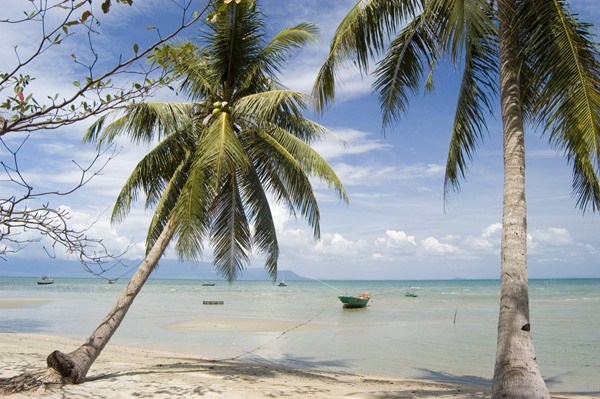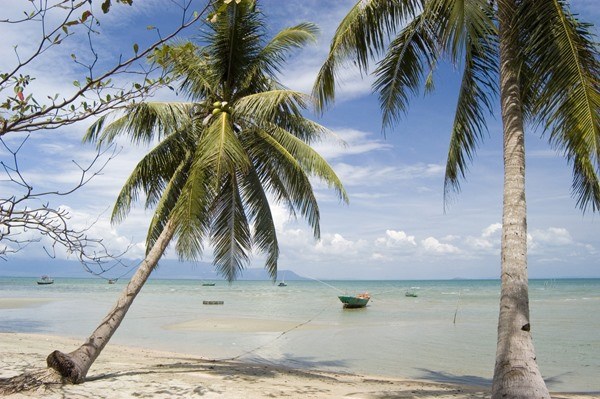
Travel site Thrillist has included Cat Co 2 beach on Cat Ba island, northern Hai Phong city, and Thom beach on Phu Quoc island, southern Kien Giang province, on its list of the best seaside getaways in Vietnam.

Thom
Beach on Phu Quoc Island.
Situated 45km to the east of Hai Phong, Cat Ba boasts
crystal-clear waters, jungles and ancient fishing villages, but has managed to
keep a relatively low profile despite being just south of the world-famous Ha
Long Bay.
The travel site described Cat Co 2 as "the most relaxed of Cat Ba’s three
beaches” and a place where travellers can take in a panoramic view of the
amazing island surrounded by spectacular limestone mountains.
It described Thom beach on Phu Quoc island as "Nested in the forest that dominates
this island,
Thom beach is too far off the beaten track for
coach tourists but brings in enough intrepid backpackers to sustain the local
snack shacks and their surprisingly delicious homebrewed beer.”
Cat Ba island is set to become an eco-smart island and a national tourism site,
according to Hai Phong’s tourism development plan period 2017-2020.
Located 150 kilometres from Hanoi,
Cat Ba consists of 366 large and small islands, beaches and limestone
mountains. In 2004,
Cat Ba islandwas recognised by the UNESCO as a World
Biosphere Reserve
Meanwhile, Phu Quoc, 40km west of southern Kien Giang province, is dubbed the
"pearl” island.
Phu Quoc features a monsoon tropical climate. It has two seasons, the dry
season from November to April and the rainy season from May to October. The
average temperature is 28 degrees Celsius, allowing visitors to enjoy the
island’s beauty at any time of the year.
The Phu Quoc National Park
is one of the most attractive places in the district. It is home to 929 plant
species, of which 42 are listed in the Vietnamese and world red books of
endangered species. The park is part of the Kien Giang biosphere reserve, which
was recognised as a World Biosphere Reserve by UNESCO in 2006.-VNA
Source: VNA
Located just a 20-minute drive from Hoa Binh City, Ora Hill Farmstay & Glamping Hoa Binh is a captivating new destination nestled in Mo hamlet, Bình Thanh commune, Cao Phong district. Combining farming with leisure, this tranquil retreat is perfect for those seeking balance, joy, and an immersive experience in the expansive beauty of nature.
Muong Bi - Tan Lac is renowned as one of the four famous Muong regions in Hoa Binh province. Blessed by nature with a favourable climate and stunning landscapes, Tan Lac holds great advantages for tourism development. The local tourism industry has made remarkable strides in recent times thanks to the attention and support from the local authorities and sectors.
With its strategic location, well-developed transport network, and diverse soil and climatic conditions, Hoa Binh is emerging as a must-visit destination in Vietnam's northwestern tourism corridor. The province boasts numerous attractions, including the Kim Boi hot springs (Kim Boi district), the Dau Rong cave complex (Cao Phong), the Mai Chau valley (Mai Chau), and the iconic Hoa Binh hydropower plant.
The northern mountainous province of Hoa Binh has been listed among the 71 most beautiful places to visit worldwide by the prestigious US travel magazine Condé Nast Traveller.
Hoa Binh province’s rich natural and cultural resources position it as a prime location for developing community-based tourism (CBT). In recent years, support from central and provincial policies, as well as assistance from non-governmental organisations, have encouraged local ethnic minority and mountainous communities to actively engage in the sector.



